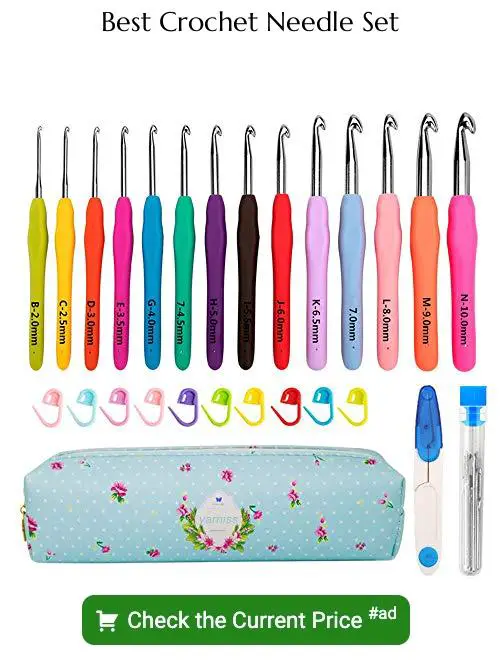Explore the diverse range of crochet needles as we delve into their various types, materials, and sizes in this informative blog post.
Crochet is a beautiful craft that requires skill, patience, and the right tools. One of the most important tools in crochet is the crochet needle.
Whether you’re a beginner or an experienced crocheter, choosing the right type of crochet needle can make all the difference in your project’s outcome. With so many different types of crochet needles available, it can be overwhelming to know where to start.
In this article, we’ll explore some of the most common types of crochet needles and help you choose which one is best for your next project. So grab a cup of tea and let’s dive into the world of crochet needles!
Material Varieties
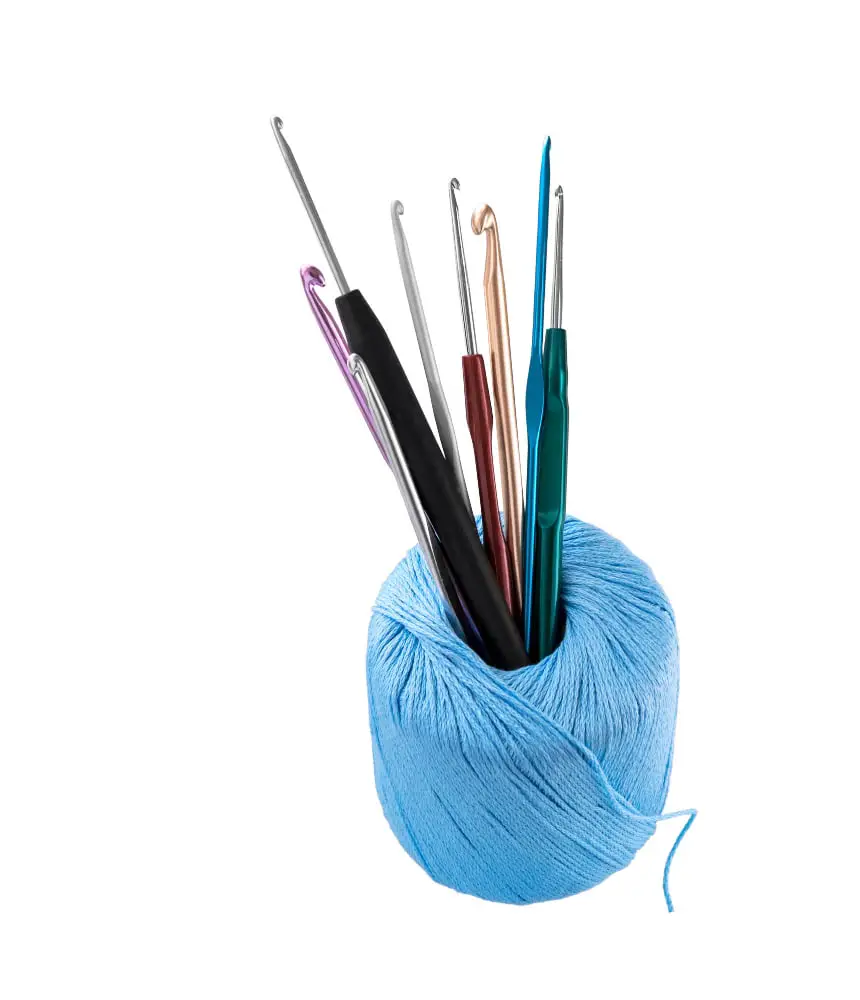
The most common materials used for crochet hooks are wood, plastic, aluminum and steel.
Wooden Crochet Hooks: Wooden crochet hooks are popular among crocheters because they’re lightweight and warm to the touch. They also tend to be quieter than other types of needles when working with yarn.
Plastic Crochet Hooks: Plastic crochet hooks are affordable and come in a wide range of colors. They’re great for beginners as they have more grip than metal or wooden ones.
Aluminum Crochet Hooks: Aluminum is one of the most commonly used materials for making crochet hooks due to its durability and affordability. It’s also lightweight which makes it easy on your hands during long projects.
Steel Crochet Hooks: Steel is another durable material that’s often used for making smaller sized hook sizes (such as those needed when working with thread). Steel has a smooth surface which allows stitches to glide easily along the needle shafts without snagging or catching on rough spots.
A. Wooden Crochet Hooks
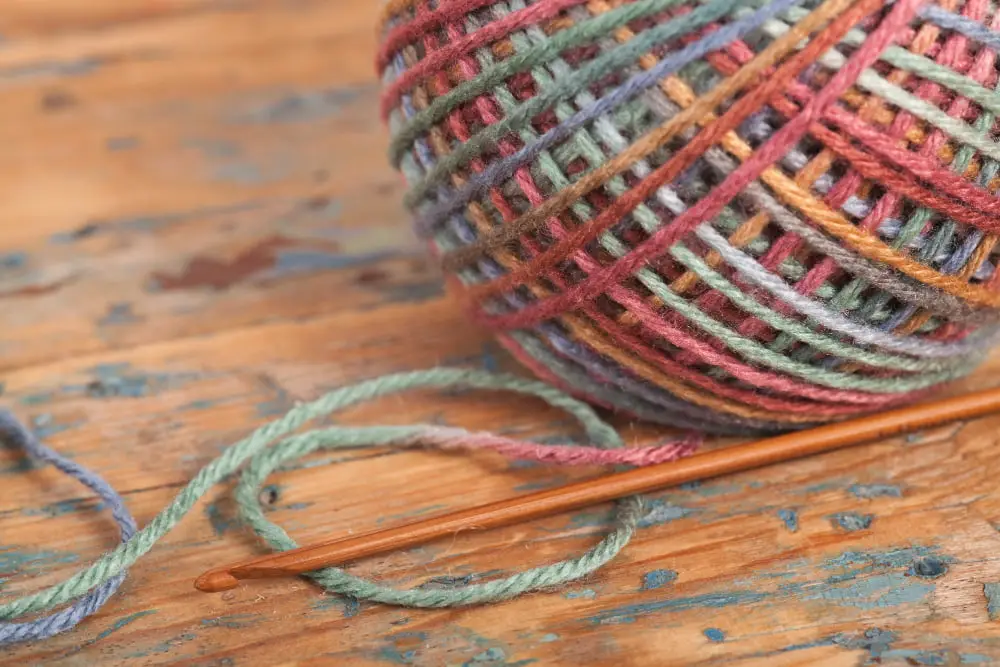
They come in various types of wood, including bamboo, birch, maple, and rosewood. Wooden crochet hooks are lightweight and easy to handle for extended periods without causing hand fatigue.
Bamboo is the most common type of wooden hook used by crocheters because it’s affordable and eco-friendly. It’s also durable but flexible enough not to break easily when subjected to pressure.
Birchwood is another popular option that provides a smooth surface for easy gliding through yarn stitches while maintaining its shape over time.
Maple wood has an attractive grain pattern that makes it stand out from other woods used in making crochet needles. Maple hooks have a polished finish that gives them an elegant look while being comfortable on your hands during use.
Rosewood is one of the most expensive types of wooden crochet needles available due to its rarity as well as durability properties; this type can last you years with proper care maintenance.
B. Plastic Crochet Hooks
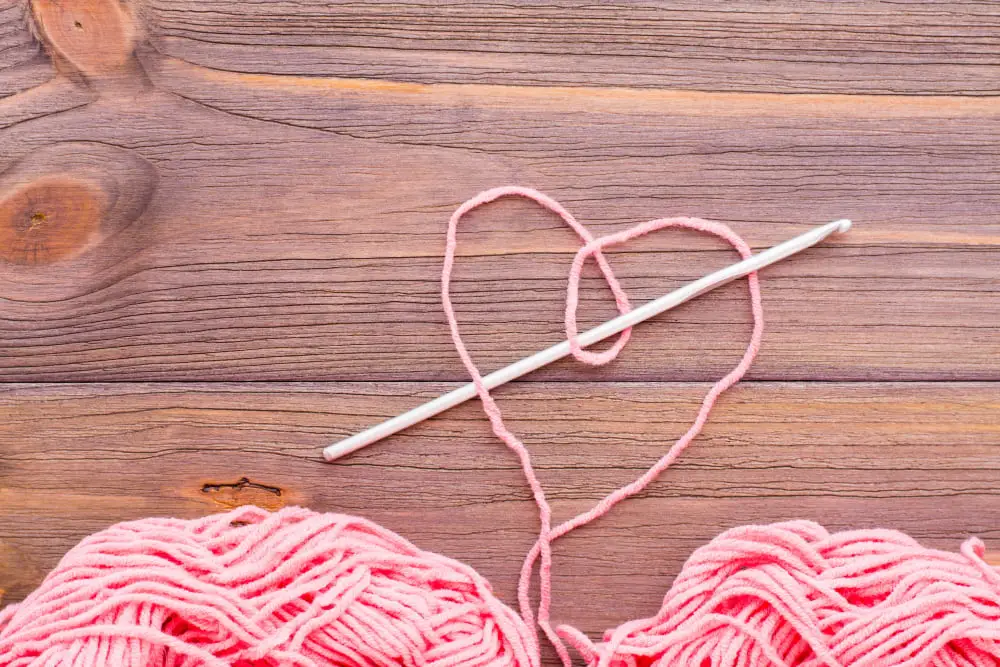
They are lightweight, affordable, and come in a variety of colors. Plastic hooks can be made from different types of plastic materials such as acrylic or nylon.
One advantage of using plastic crochet hooks is that they have more grip than metal ones, making them easier to hold onto while working on your project. This feature makes them an excellent option for those with arthritis or other hand conditions.
Another benefit is that they tend to be less expensive than other types of crochet needles like wooden or aluminum ones. This affordability means you can purchase multiple sizes without breaking the bank.
However, one downside to using plastic crochet hooks is that they may not last as long as their metal counterparts due to wear and tear over time. Some crocheters find it harder to maintain consistent tension when working with these kinds of needles because the yarn tends not glide smoothly along the hook’s surface compared with metal options.
C. Aluminum Crochet Hooks
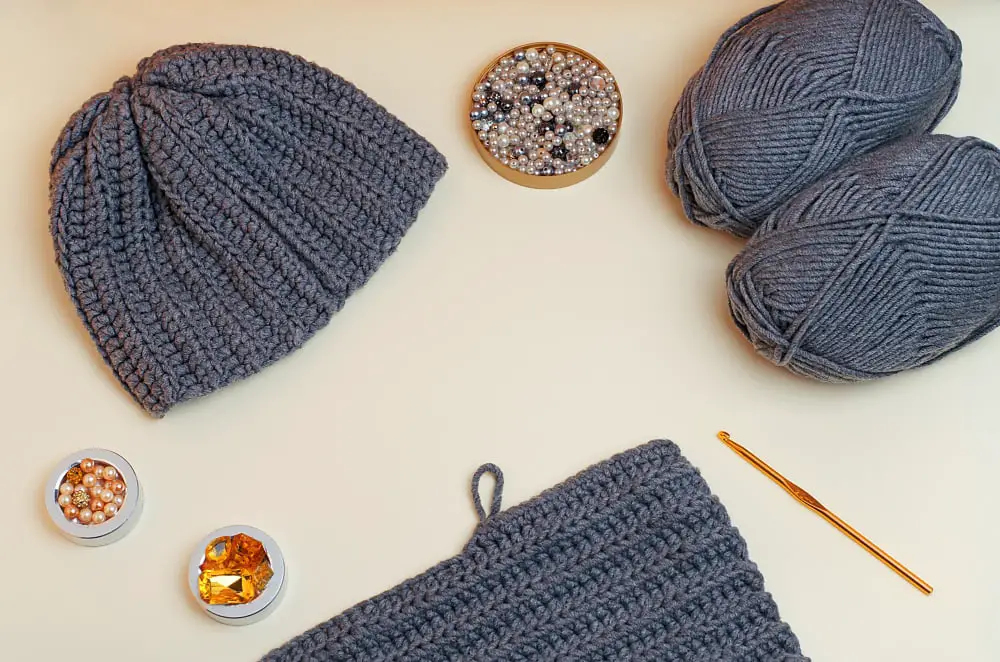
They come in various sizes, making them suitable for different types of yarns and projects. Aluminum hooks have a smooth surface that allows the yarn to glide easily, making it easier for beginners to learn how to crochet.
One of the benefits of aluminum crochet hooks is that they are lightweight, which means you can work on your project for hours without experiencing hand fatigue. Aluminum needles do not rust or corrode over time like other materials such as steel or iron.
When choosing an aluminum hook size, keep in mind that larger sizes will create bigger stitches while smaller sizes will produce tighter stitches. It’s essential to choose the right size hook based on your pattern requirements and personal preference.
D. Steel Crochet Hooks

These hooks are made from high-quality steel, which makes them durable and long-lasting. Steel crochet hooks come in various sizes, ranging from 0.4mm to 3mm.
One of the benefits of using steel crochet hooks is that they allow you to create intricate designs with delicate thread or yarns such as cotton or silk. They also have a smooth surface that allows the thread to glide easily through each stitch.
When choosing a steel hook, it’s important to consider its size carefully since these types of needles can be quite small compared to other materials like aluminum or plastic. It’s recommended that you choose one based on your project requirements rather than personal preference.
Types of Hooks
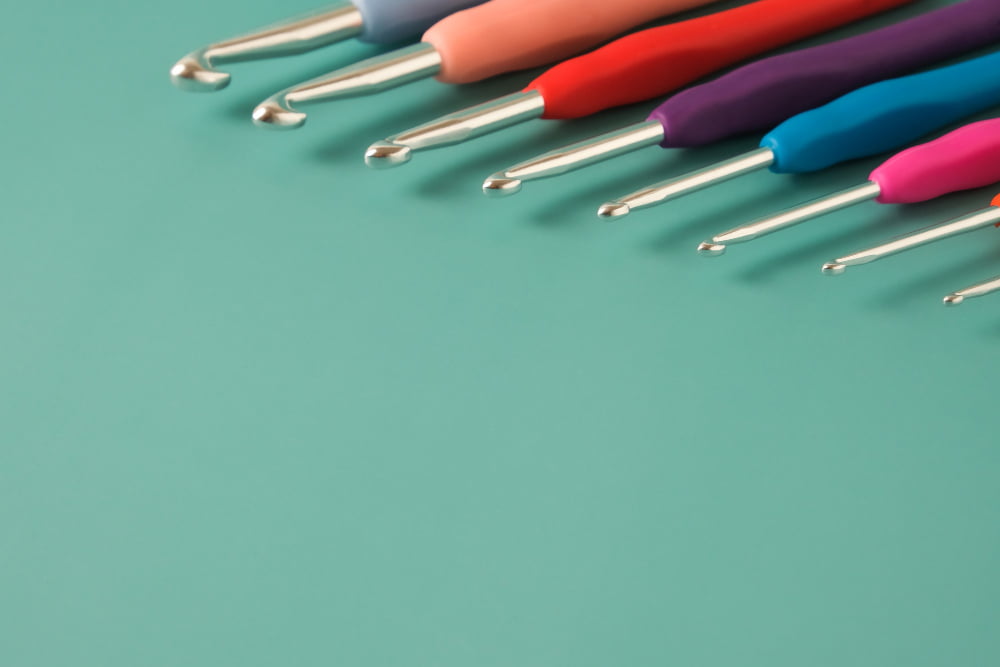
Each type of hook has its unique features and benefits that make them suitable for specific projects or personal preferences. Some crocheters prefer a particular type of hook because it’s more comfortable to hold, while others choose based on the material used in making the needle.
Inline crochet needles have a straight shaft with an inline head that sits perpendicular to the shaft. This design makes them ideal for working with tight stitches and intricate patterns as they allow you to insert your hook into each stitch quickly.
Tapered crochet needles have a pointed tip at one end and gradually widen towards the handle end. They’re perfect for creating lacy designs or when working on larger projects like blankets or shawls.
Ergonomic crochet hooks feature handles designed specifically for comfort during extended use, reducing hand fatigue significantly.
Interchangeable Crochet Hooks come in sets where you can swap out different sizes of hooks onto one handle; this is great if you don’t want multiple individual hooks cluttering up your workspace!.
Tunisian Crochet Hooks are longer than traditional ones since they need space enough space so that all loops can fit comfortably without falling off easily from either side while stitching back-and-forth rows (like knitting).
Double-Ended Crochet Hooks work well when doing Tunisian-style crocheting but also useful if switching between two colors frequently within one project – no need always switch hands!.
Lighted Crochet Hooks help illuminate dark yarns’ stitches better by providing extra light right where needed most: at their tips!.
Knook Hook is another tool similar-looking like regular knitting needles but having an eyelet near its pointy tip allowing users thread through yarn instead using standard slipknot method before starting any new row/stitch pattern.
A. Inline Crochet Needles

These hooks have a straight shaft and the throat of the hook is in line with the handle. This design makes it easier to maintain consistent tension while working on your project.
Many crocheters prefer inline crochet needles because they allow for faster stitching and smoother transitions between stitches. The smoothness of these hooks allows yarn to glide easily over them without snagging or catching.
If you’re new to crochet or looking for an upgrade from your current hook, consider trying out an inline crochet needle. They come in various sizes and materials like aluminum, plastic or steel so you can choose one that suits your needs best.
B. Tapered Crochet Needles
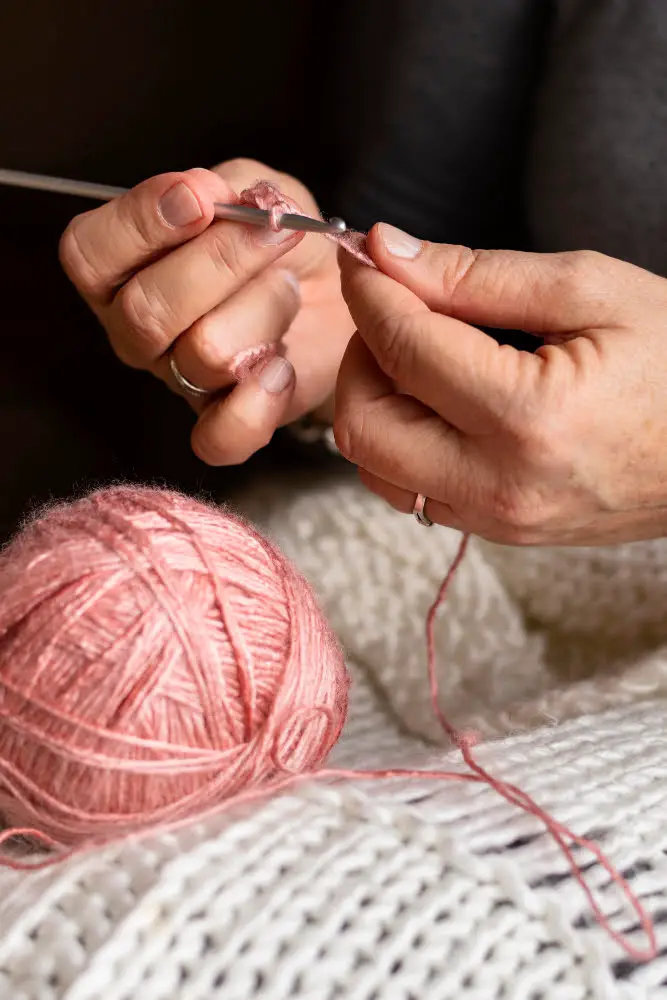
They have a pointed tip that makes it easy to insert into tight stitches, and the shaft gradually widens towards the handle. This design allows for smooth stitching and prevents snagging or splitting of yarn.
Tapered crochet needles come in various materials such as wood, plastic, aluminum, and steel. Each material has its unique properties that affect how they feel in your hand while working on your project.
Wooden tapered hooks are lightweight with an ergonomic grip making them comfortable to hold for extended periods without causing fatigue or strain on your hands. Plastic tapered hooks are affordable and durable but may not be suitable for heavy-duty projects due to their flexibility.
Aluminum tapered hooks offer durability with a smooth surface finish allowing yarns to glide effortlessly through stitches while maintaining consistent tension throughout the project’s length. Steel-tipped tapering hook is perfect when working with fine threads like lace weight yarns since they provide excellent stitch definition without snagging delicate fibers.
C. Ergonomic Crochet Needles
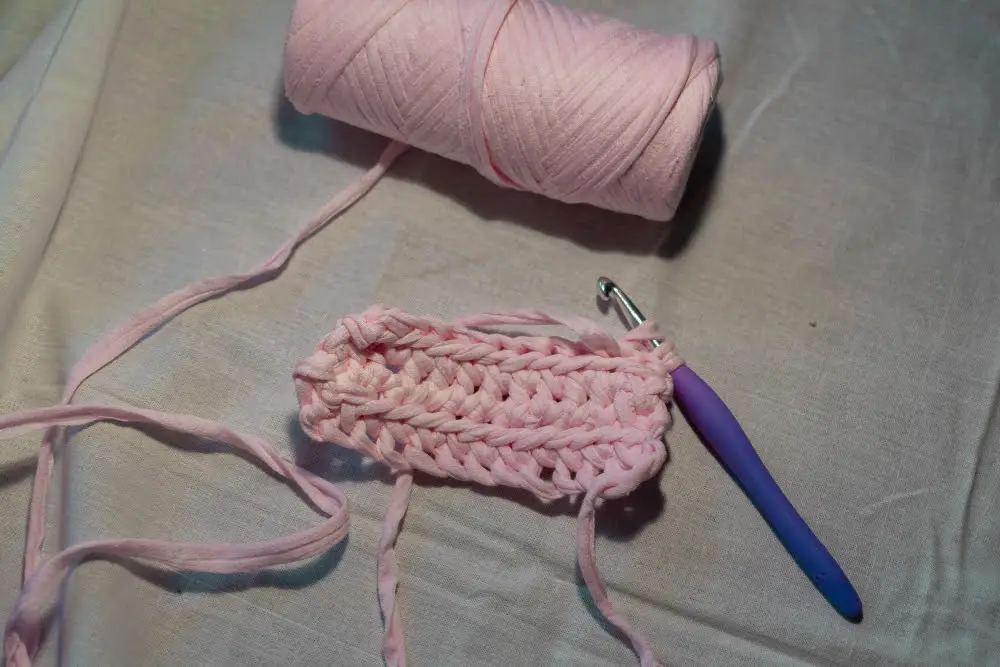
These hooks have a comfortable grip that fits snugly in your hand, allowing you to crochet for longer periods without experiencing discomfort.
The ergonomic design of these hooks also helps improve your posture while crocheting. By holding the hook at a natural angle, you can avoid putting unnecessary pressure on your wrist and fingers.
There are many different types of ergonomic crochet needles available on the market today. Some feature soft grips made from rubber or silicone materials that provide extra cushioning for your hands.
Others have unique shapes that fit comfortably in the palm of your hand.
When choosing an ergonomic crochet needle, it’s important to consider factors such as size and material type as well as comfort level. You may need to try out several different styles before finding one that works best for you.
D. Interchangeable Crochet Hooks
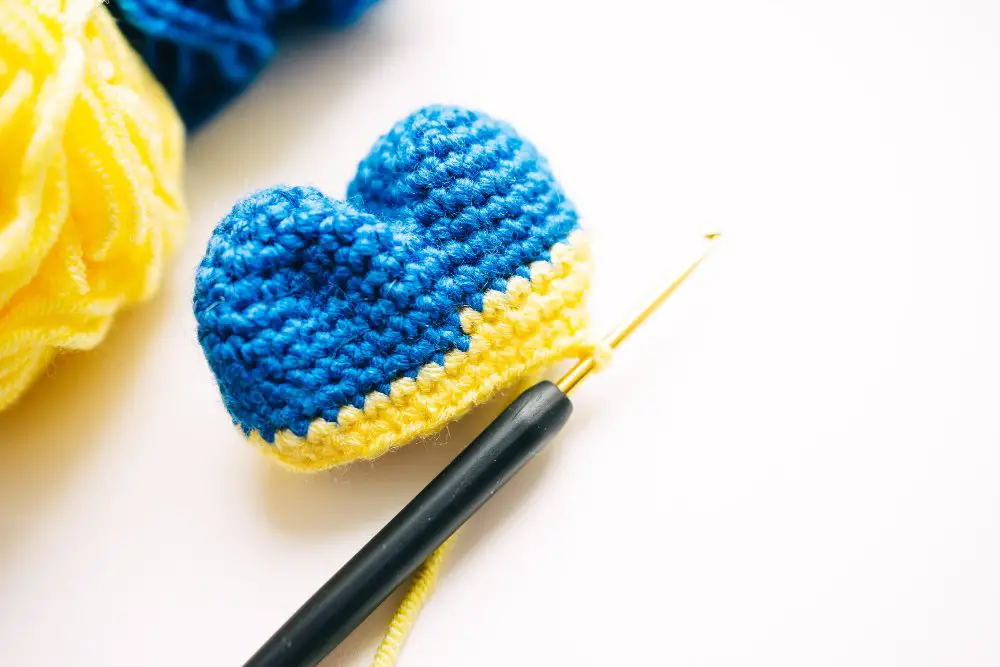
These sets typically come with a handle and interchangeable heads that can be switched out depending on the desired size. This makes them perfect for those who like to switch between projects or need different hook sizes within one project.
One of the benefits of using interchangeable crochet hooks is that they take up less space than traditional single-hook sets, making them ideal for travel or storage in small spaces. They also allow you to experiment with different types of yarns and stitch patterns without having to invest in new tools each time.
When choosing an interchangeable set, consider factors such as material (wooden, plastic, aluminum), size range offered by the set, and ease of use when switching out heads. Some popular brands include Knit Picks Options Interchangeable Crochet Hooks Set and Denise Interchangeable Crochet Hook Kit.
E. Tunisian Crochet Hooks
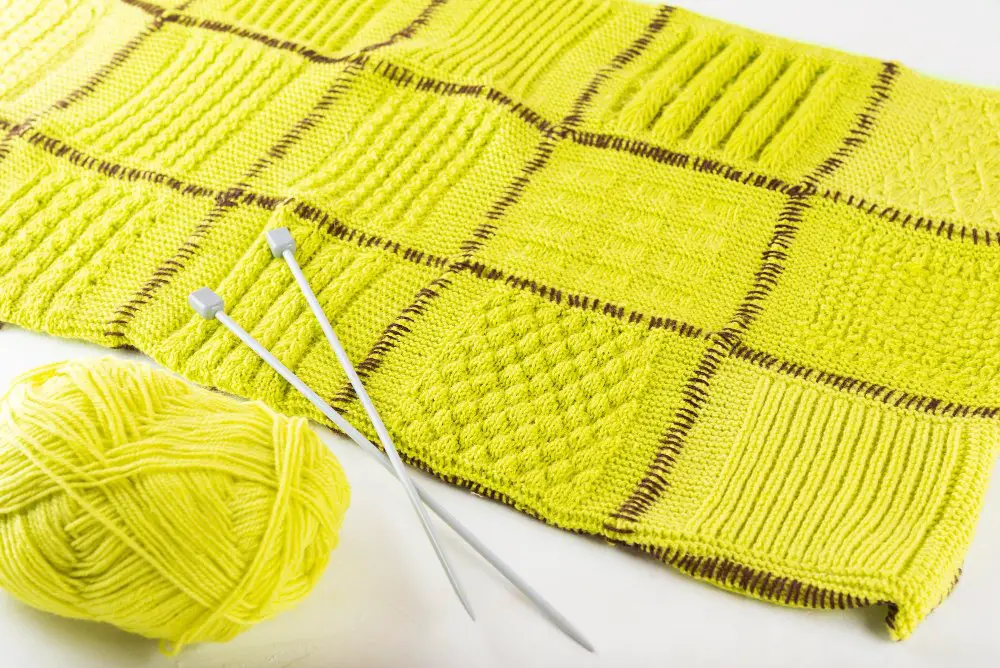
It creates a dense, textured fabric that’s perfect for blankets, scarves, and other cozy projects. Tunisian crochet hooks are longer than traditional crochet hooks to accommodate the extra loops required in this style of crocheting.
These specialized hooks have a stopper at one end to prevent stitches from slipping off while you work on the next row. They come in various sizes like regular crochet needles but with an extended length ranging from 8 inches up to 14 inches or more.
If you’re new to Tunisian Crochet Hooks, it’s best to start with an intermediate size hook around 9-10mm as they are easier for beginners due their larger size which makes them less fiddly when working through your first few rows.
F. Double-Ended Crochet Hooks

These hooks have two pointed ends, allowing you to work on both sides of your project without having to turn it around. They come in different sizes and materials, just like regular crochet needles.
One advantage of using double-ended crochet hooks is that they allow you to create reversible patterns with ease. You can also use them for working in the round or creating tubular shapes such as bags or sleeves.
When choosing a double-ended hook, consider the size and material carefully based on your project’s needs. Some brands offer sets with multiple sizes so that you can experiment with different thicknesses.
G. Lighted Crochet Hooks
These innovative hooks have an LED light built into the handle, which illuminates your work as you stitch. This feature is especially helpful when working with dark or low-light yarns, making it easier to see your stitches and avoid mistakes.
Lighted crochet hooks come in various sizes and styles, just like traditional ones. They can be made from different materials such as plastic or aluminum and may have ergonomic handles for added comfort during use.
While some crocheters prefer traditional needles over lighted ones, others find that they make their projects more enjoyable by reducing eye strain and allowing them to work longer without fatigue.
H. Knook Hooks
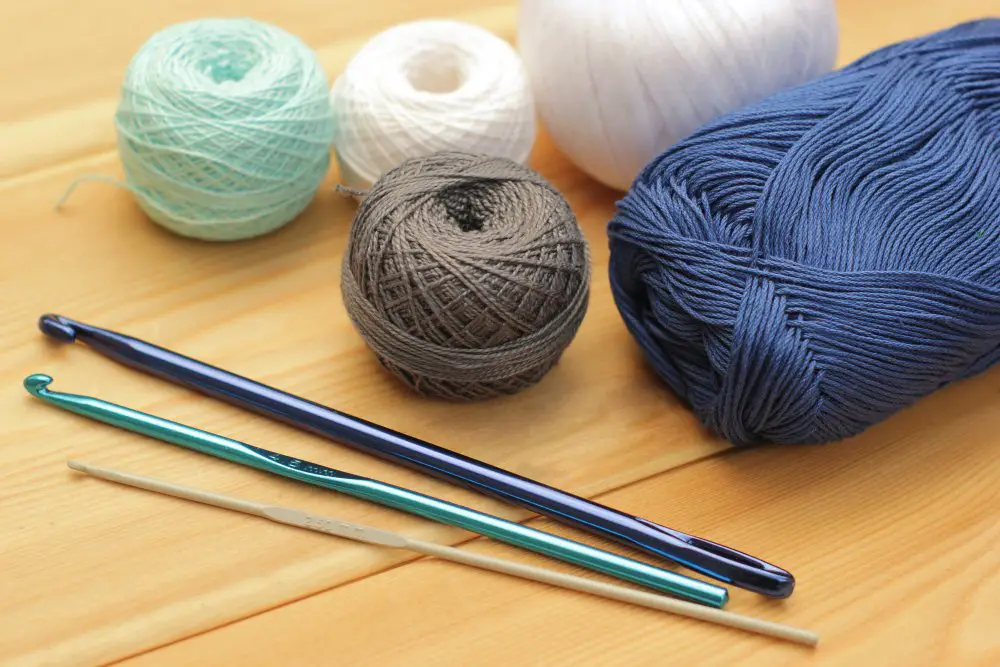
They have a long, pointed end like a knitting needle and feature an eye at the other end for holding yarn like traditional crochet hooks. With knooking, you can create beautiful knit-like fabrics using only one tool.
These versatile tools come in various sizes to accommodate different types of yarn weights and textures. Knooks are perfect for those who want to try something new or combine their love for both crafts into one project.
If you’re interested in trying out knooking, there are many resources available online with tutorials on how to get started. You can also find patterns specifically designed for knooks that will help guide you through your first few projects.
Whether you prefer traditional crochet hooks or want to experiment with something new like knooking, it’s essential always to choose high-quality needles made from durable materials such as wood or metal.
Anatomy of a Crochet Hook
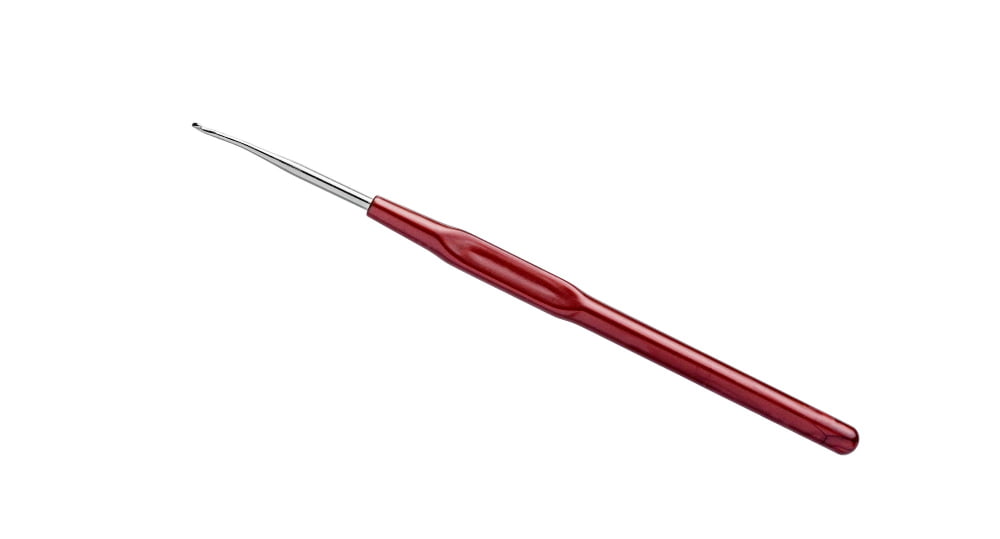
A typical crochet hook consists of three parts: the head, shaft, and handle. The head is where you insert your yarn and pull it through loops to create stitches.
It has a pointed tip that helps you pierce through tight spaces in your work.
The shaft is the long part of the needle between the head and handle. Its thickness varies depending on what type of stitch you’re making or how thick your yarn is.
Lastly, there’s a handle at one end that provides grip for comfortable use during extended periods without causing hand fatigue or cramps.
Crochet Hook Styles
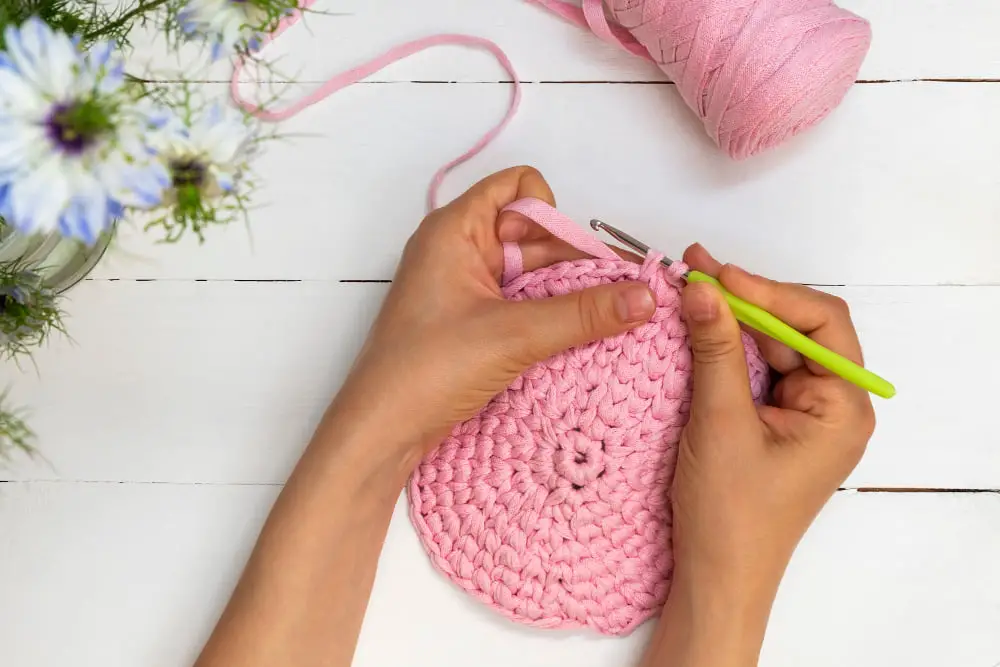
Each style has its unique features and benefits that make them suitable for specific projects or personal preferences.
Inline Crochet Needles have a straight shaft with a head that is the same diameter as the rest of the hook. This type of hook is ideal for those who prefer tight stitches and need more control over their work.
Tapered Crochet Needles have a gradually tapered throat, which makes it easier to pull through loops without snagging or splitting yarn fibers. These hooks are perfect for working on delicate projects like lacework or intricate patterns.
Ergonomic Crochet Needles feature an ergonomic handle designed to reduce hand fatigue during extended periods of crocheting. They come in various shapes and sizes, making them comfortable for all hand sizes.
Interchangeable Crochet Hooks allow you to switch out different sized hooks on one handle base quickly. This feature saves space in your crafting kit while providing versatility when working on multiple projects simultaneously.
Tunisian (Afghan) crochet needles look like long knitting needles with a stopper at one end; they’re used primarily when creating Tunisian stitch patterns such as afghans because they can hold many stitches at once due to their length. Double-Ended Crochet Hooks have two heads instead of just one; this allows you always work from either side without having first turn your project around before continuing stitching.
Lighted crochet hooks come equipped with LED lights built into the handles so that you can see what you’re doing even in low light conditions – perfect if your eyesight isn’t what it used be!
Knook Hooks combine elements from both knitting needles and traditional crochet hooks by featuring an eyelet near its tip where yarn passes through allowing knitters create fabric using knit-like techniques but still use single-ended tools.
Which style should I choose? It depends entirely upon personal preference and the project you’re working on.
A. Which Crochet Hook Style Is Best?
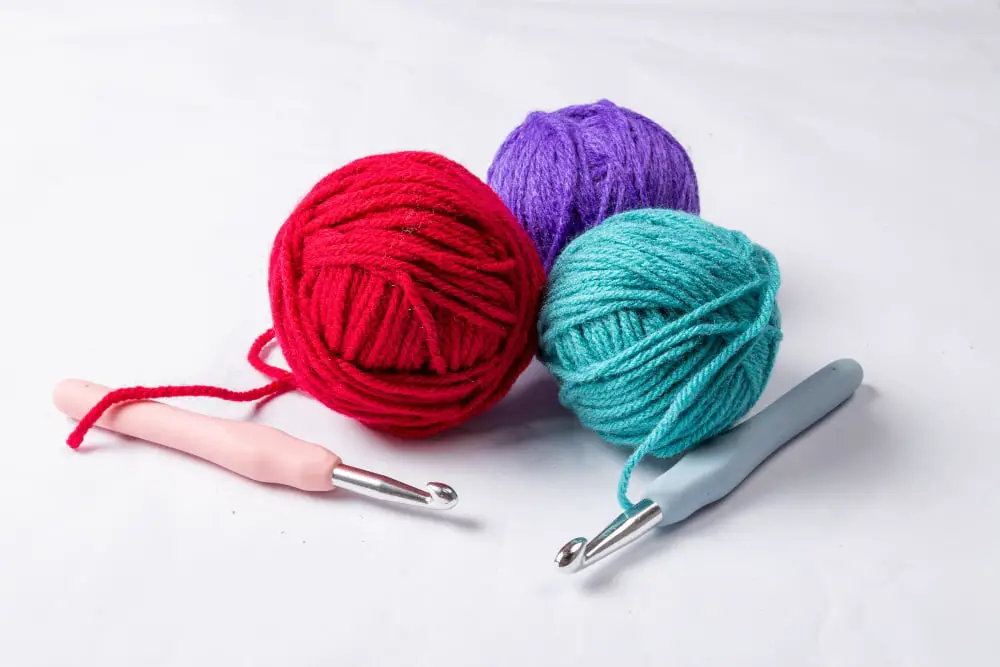
The right hook for you will depend on your personal preference and the type of project you’re working on. Inline hooks are great for those who prefer a smooth glide through their stitches, while tapered hooks can help prevent splitting yarn fibers.
Ergonomic hooks are designed with comfort in mind and can be helpful if you suffer from hand fatigue or arthritis.
Interchangeable crochet hooks allow crocheters to switch out different sizes of needles without having to buy an entirely new set each time they start a new project. Tunisian crochet hooks have longer shafts that make them ideal for creating larger projects like blankets or scarves.
Double-ended crochet needles come in handy when working with two colors at once, while lighted crochet needles provide illumination when crocheting in low-light conditions.
Sizes and Measurement
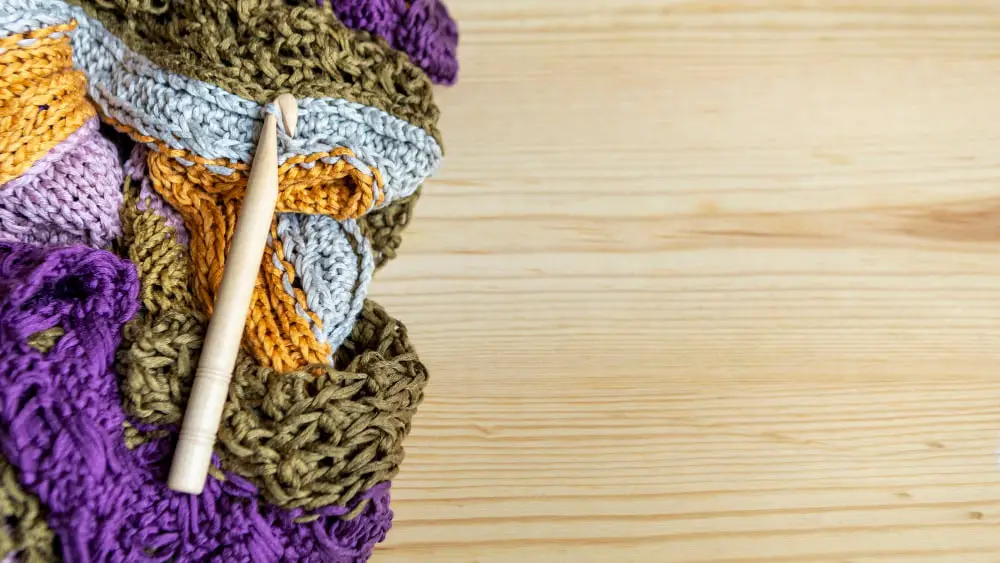
The size of a crochet hook is determined by its diameter, which can range from as small as 0.6mm to as large as 25mm.
The most common sizing system used for crochet hooks is the US standard sizing system, which ranges from B (2.25 mm) to S (19 mm). However, other countries use different systems such as UK or metric measurements.
Steel crochet hooks are sized differently than regular ones and are often used for thread work or lace-making projects. They range in size from 00 (3.5mm) up to 14 (.75mm).
To determine what hook size you need for your project, consult the pattern instructions or gauge swatch provided by the designer; this will help ensure that your finished product turns out correctly.
If you don’t have access to a pattern with specific instructions on hook sizes needed but know what yarn weight you’re using – there are general guidelines available online that suggest appropriate needle/hook sizes based on yarn thicknesses.
A. Crochet Hook Sizes
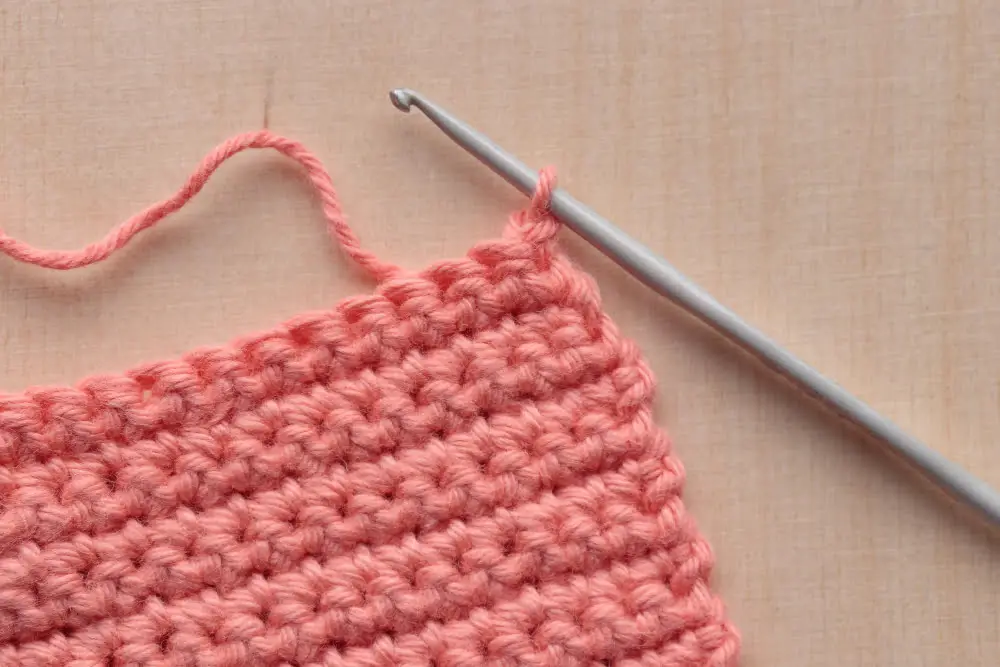
The size of your crochet hook determines the size and tension of your stitches, which ultimately affects the outcome of your project. Crochet hooks come in different sizes, ranging from 0.6mm to 25mm in diameter.
The most common sizing system for crochet hooks is based on a letter or number designation (US) or millimeter measurement (metric). For example, a US G/4 mm hook has a diameter of 4mm and is equivalent to a metric size 6.
It’s important to note that not all brands follow the same sizing standards; therefore, it’s crucial always to check each brand’s specific measurements before purchasing any new hooks.
When selecting the right-sized needle for your project, consider both yarn weight and pattern instructions as they will guide you towards choosing an appropriate sized needle. A smaller-sized needle creates tighter stitches while larger needles create looser ones.
B. Steel Crochet Hook Sizes
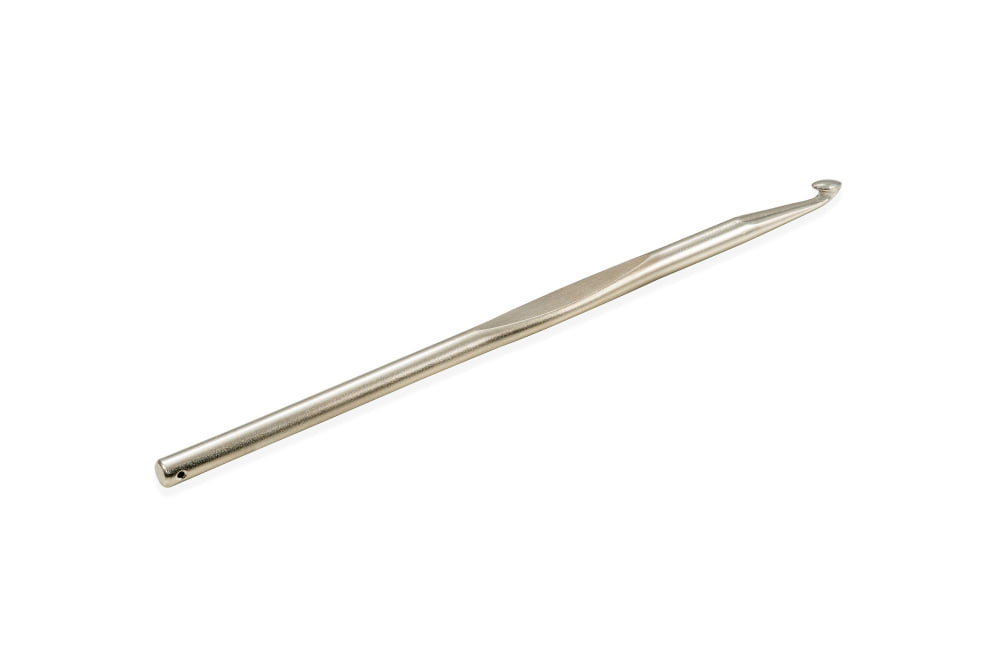
They come in various sizes, which are designated by numbers ranging from 14 to 00 (smallest to largest). Unlike regular crochet hook sizes that use letters and numbers, steel hook sizes only use numbers.
The smaller the number of the steel hook size, the larger its diameter. For example, a size 14 steel crochet hook has a diameter of just over one millimeter and is used for very fine threadwork such as lace-making or doilies.
On the other hand, a size 00 steel crochet hook has an approximate diameter of two millimeters and can be used with thicker threads.
It’s essential to choose the right-sized needle when working on your project because it affects both stitch gauge and tension. Using too small or too large needles than recommended can result in uneven stitches that may not fit together correctly.
C. US Vs. UK Crochet Hook Size Conversion
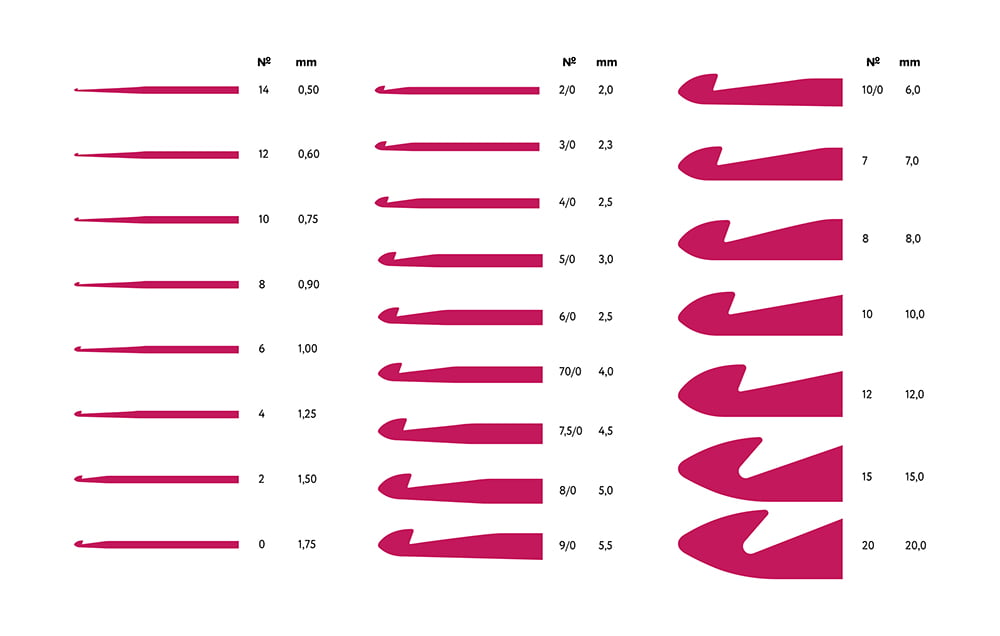
However, crochet hook sizing can be confusing because there are two different systems: US and UK. The US system uses letters to indicate hook sizes, while the UK system uses numbers.
For example, a 5mm crochet hook is equivalent to a size H/8 in the US or a size 6 in the UK. It’s crucial to know which sizing system you’re using when following patterns from other countries or purchasing hooks online.
To convert between these two systems easily, you can use conversion charts available online or at your local craft store. These charts will help you find out what letter corresponds with what number so that you can select an appropriate-sized needle for your project regardless of where it was designed.
D. How to Determine A Hook’s Size
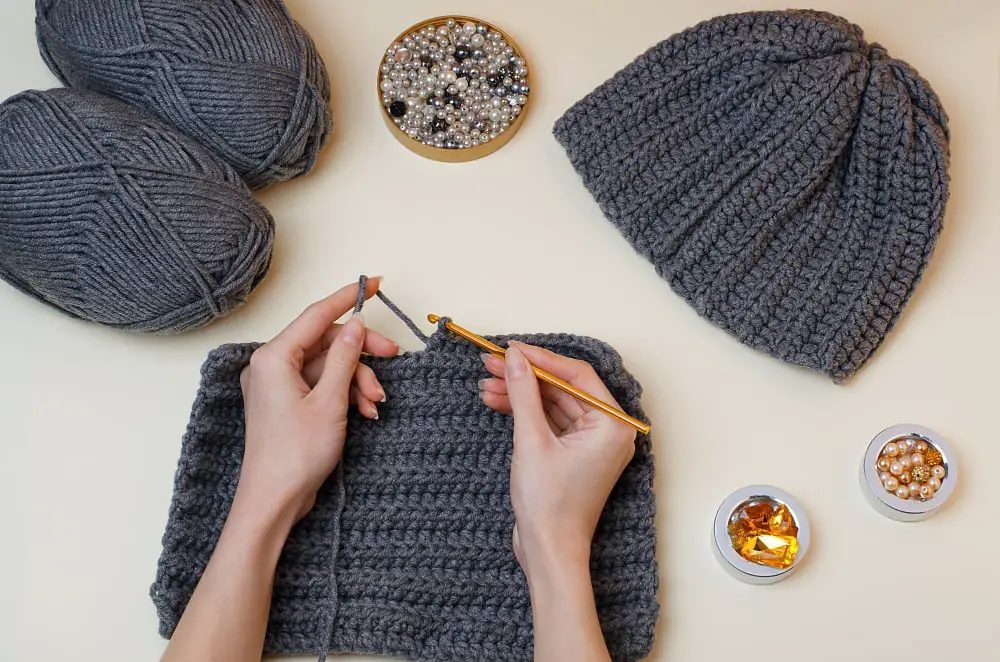
The size of your hook will determine the gauge and tension of your project, which can significantly impact its final appearance. But how do you know what size crochet hook to use? Fortunately, determining a hook’s size is relatively easy.
One way to determine a crochet hook’s size is by using a Hook Gauge Tool. This tool has holes in various sizes that allow you to measure the diameter of your needle accurately.
Simply insert the end of your needle into each hole until you find one that fits snugly around it without being too tight or too loose.
Another way to determine a crochet hook’s size is by measuring it yourself with just an ordinary ruler or tape measure! Measure from the tip (the pointy end) all along its length up until where handle starts (where there are no more stitches). You should get an accurate measurement this way as well!
I. A Hook Gauge Tool
The right hook can make your project a breeze, while the wrong one can cause frustration and even pain. But how do you know which size hook to use? One way is by using a hook gauge tool.
A hook gauge tool is a small plastic or metal device that measures the diameter of your crochet needle in millimeters or inches. It usually has several holes of different sizes that correspond with standard crochet needle sizes.
To use a hook gauge tool, simply insert your crochet needle into each hole until you find the one that fits snugly around it without being too tight or loose. The corresponding number on the tool will tell you what size your needle is.
Ii. Measure the Hook
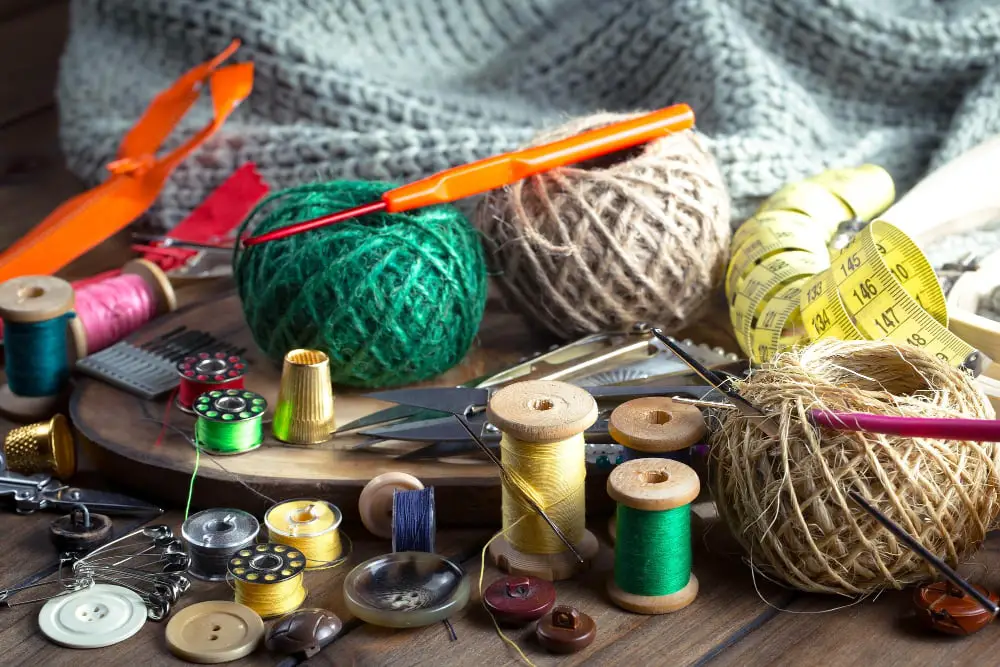
To measure the size of your crochet needle, place it on a ruler or tape measure and count the number of millimeters from one end to the other. The measurement should be taken from where the shaft meets with the handle (or thumb rest) up to its tip.
It’s important to note that some hooks may not have their sizes printed on them or may have worn off over time. In such cases, measuring can help you identify what size they are so that you can use them for future projects.
Measuring your crochet hook is an easy process and requires only basic tools like a ruler or tape measure. Once you know how long it is in millimeters, refer back to our earlier section about standard sizing charts for US vs UK conversions if necessary.
Popular Crochet Hook Brands

One of them is the brand. There are countless brands out there that produce crochet hooks, but some stand out from the rest due to their quality and popularity among crocheters.
Tulip is one such brand that has gained a reputation for producing high-quality crochet hooks with ergonomic designs and smooth finishes. Their Etimo Rose line of hooks features cushioned grips and sharp tips, making them comfortable to use for extended periods.
Clover is another popular brand known for its innovative designs and attention to detail in manufacturing their products. The Clover Amour line of hooks features a unique shape designed specifically for comfort while crocheting.
For those on a budget or just starting out with crocheting, Susan Bates offers affordable options without sacrificing quality or durability in their Silvalume line of aluminum crochet needles.
Ultimately, finding the right hook depends on personal preference as well as project requirements.
A. Best: Tulip
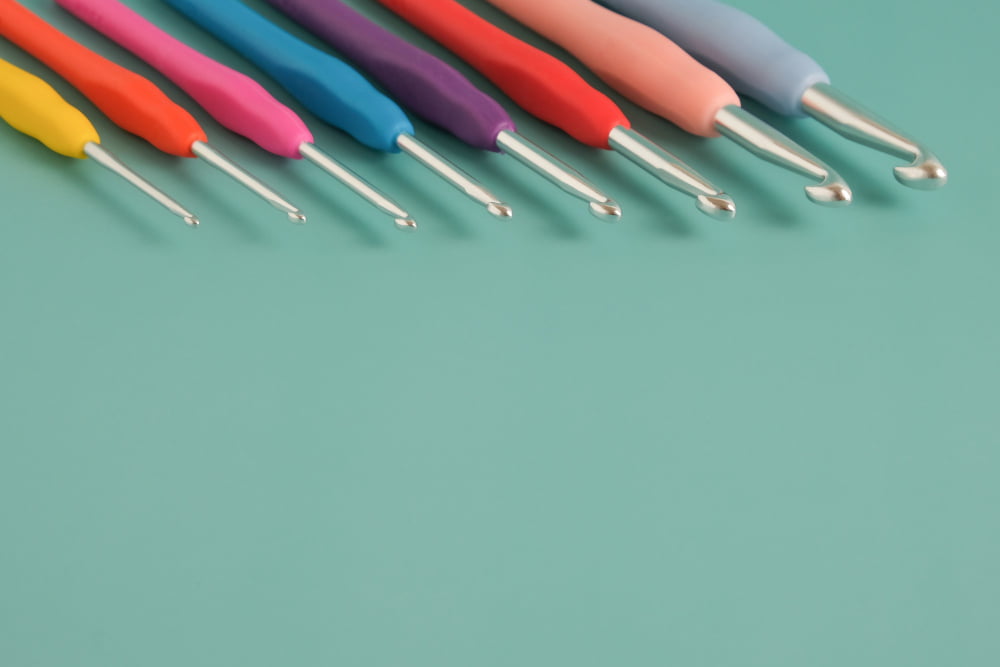
Known for their high-quality materials and ergonomic designs, Tulip crochet hooks are a favorite among many crocheters. Their cushioned grip handles make them comfortable to use for extended periods of time without causing hand fatigue or cramping.
Tulip offers an extensive range of hook sizes and styles, including interchangeable sets that allow you to switch between different hook sizes with ease. The company also produces beautiful limited edition collections featuring unique colors and patterns.
While they may be pricier than other brands on the market, many crocheters swear by Tulip’s quality and durability. If you’re serious about your craft or suffer from hand pain while crocheting, investing in a set of Tulip crochet hooks could be well worth it in the long run.
Choosing the right type of crochet needle can make all the difference in your project’s outcome.
B. Mid-Range: Clover
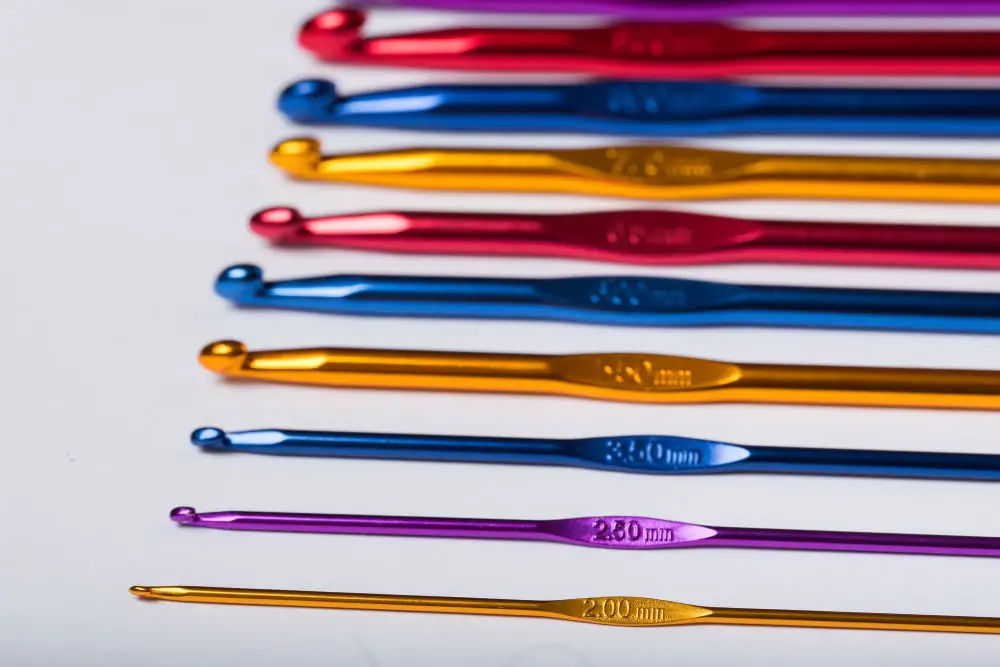
They offer a wide range of hook styles and sizes, including ergonomic options for those who suffer from hand fatigue or arthritis. The Clover Amour Crochet Hook Set is particularly popular among crocheters due to its comfortable grip and smooth hook tip.
Clover’s Soft Touch Crochet Hooks are also well-loved by many crocheters as they have an ergonomic handle that reduces stress on the hands while working on long projects. These hooks come in various sizes ranging from 0.5mm to 6mm.
C. Budget: Susan Bates
Their crochet hooks are made of durable materials and come in a variety of sizes and styles. They offer both aluminum and plastic hooks, which are perfect for beginners who want to experiment with different types before investing in more expensive options.
Susan Bates also offers ergonomic crochet hooks that provide comfort during long crocheting sessions. These hooks have soft grips that reduce hand fatigue while providing better control over your stitches.
While they may not be as well-known as some other brands, Susan Bates has been producing quality crochet needles since the 1940s. Their affordable prices make them accessible to all levels of crocheters without sacrificing quality or durability.
Crochet Patterns By Hook Size

Some patterns require specific hook sizes to achieve the desired outcome. For example, if you’re making a delicate lace shawl, you’ll want to use a smaller hook size than if you were crocheting an afghan.
It’s essential to pay attention to the recommended hook size listed on your pattern instructions and choose accordingly. If no specific needle is mentioned in your pattern instructions, consider what type of project it is and what kind of yarn weight will be used.
For instance, bulky yarn requires larger hooks while lightweight or fine threads need smaller ones for better stitch definition and tension control.
Caring for Your Needles
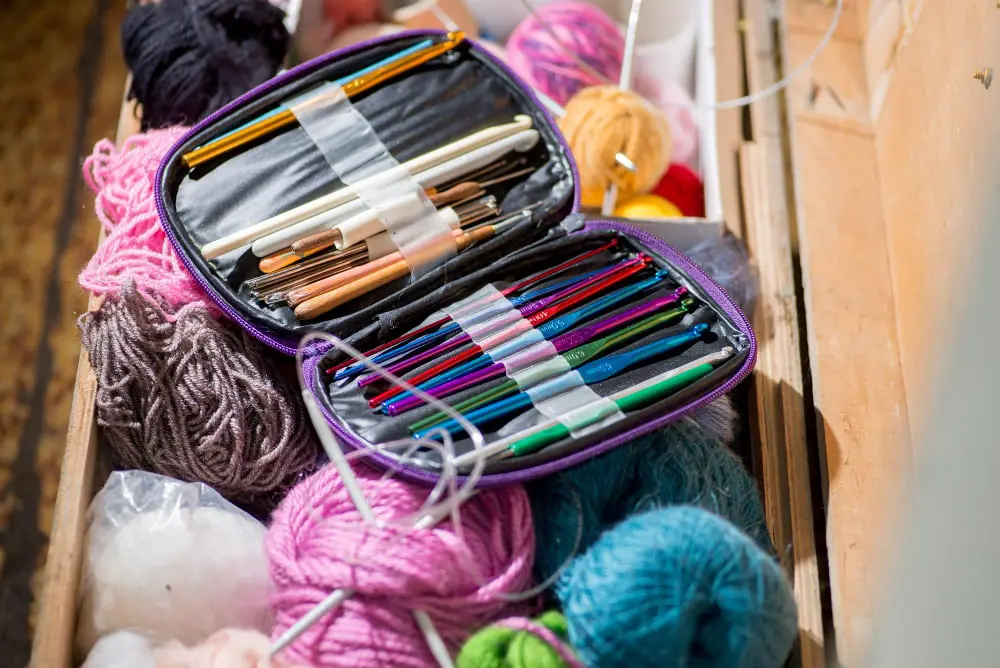
Proper maintenance will ensure that your hooks last for years and remain in excellent condition. Here are some tips on how to care for your crochet needles:
Firstly, avoid exposing your hooks to extreme temperatures or moisture as this can cause damage over time. Store them in a dry place away from direct sunlight.
Secondly, clean the hooks regularly with mild soap and water or rubbing alcohol if they become dirty or sticky.
Thirdly, be gentle when using the hook; excessive force can bend or break it.
Lastly, invest in protective cases that keep the needle safe during transport and storage.
Common Crochet Hook Questions for Beginners

You may have questions about which type of hook to use or how to hold it correctly. Here are some common crochet hook questions for beginners:
1. Which Hook Should I Use? The answer depends on your project and personal preference.
If you’re working with bulky yarn, you’ll need a larger size needle than if you’re using fine yarn.
2. How Do I Hold My Crochet Hook? There’s no one “right” way to hold your crochet hook – it’s all about what feels comfortable for you! Some people prefer holding their hooks like pencils while others grip them more tightly.
3.What are the Best Crochet Hooks for Beginners? It really depends on what kind of projects you want to make and how much money you want to spend! Many crocheters recommend starting with an ergonomic or tapered aluminum needle in sizes G through J.
4.How Do You Know What Size Crochet Hook To Use? You can determine the correct size by checking your pattern instructions or swatching before beginning any project.
A. Which Hook Should I Use?

The type of yarn you’re using and the pattern you’re following will determine which size and style of hook is best suited for your project.
For beginners, it’s recommended to start with an aluminum or plastic crochet hook in a medium size (around 4mm-5mm). These hooks are easy to handle and work well with most types of yarn.
As you become more experienced, you may want to experiment with different materials such as wood or ergonomic designs that reduce hand fatigue.
It’s also important to match your crochet hook size with the weight of your yarn. A thicker yarn requires a larger sized needle while thinner threads require smaller sizes.
If in doubt about which size is best for your project, consult the pattern instructions or ask fellow crocheters for advice on online forums.
B. How Do I Hold My Crochet Hook?

The way you hold your hook can affect the tension and evenness of your stitches. There are different ways to hold a crochet hook, but it’s essential to find what works best for you.
The most common way is called the “pencil grip,” where you hold the needle like a pencil with three fingers (index finger, middle finger, and thumb) while using your other two fingers for support. Another popular method is called “knife grip,” where you grasp it like holding a knife or spoon.
It may take some time before finding which technique suits best as everyone has their preference based on comfortability and ease of use. Experimenting with different grips will help determine which one feels natural in hand while allowing smooth movement without causing any strain or discomfort.
C. What Are the Best Crochet Hooks for Beginners?
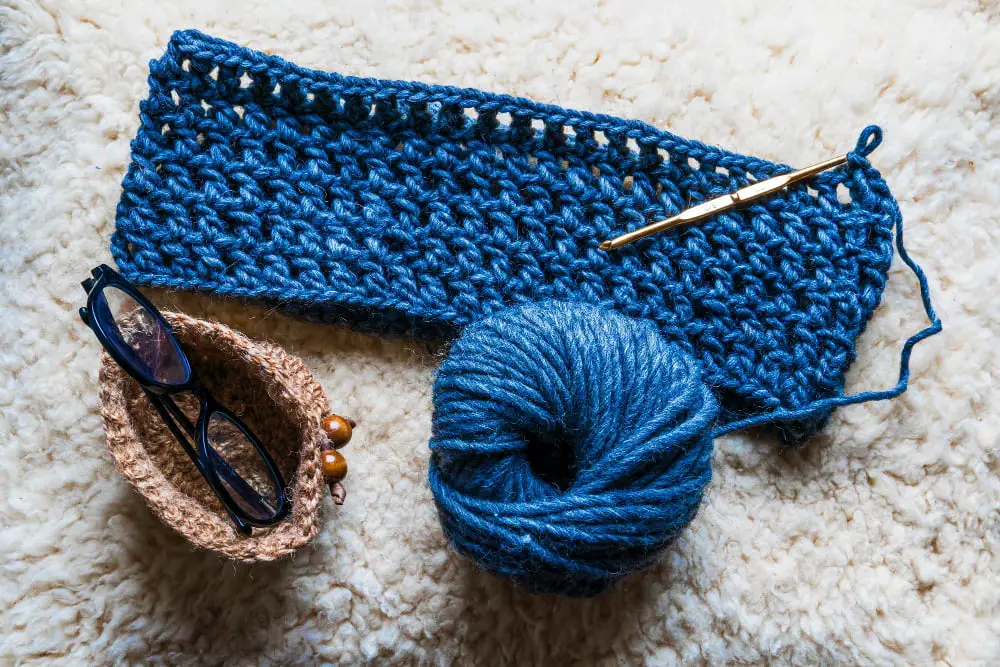
However, there are a few types of crochet hooks that are particularly well-suited for those who are just starting out.
One great option for beginners is an ergonomic crochet hook. These hooks have a comfortable grip that can help prevent hand fatigue and make crocheting more enjoyable overall.
Another good choice is an inline or tapered hook, which can make it easier to work with certain yarns and stitches.
It’s also important to consider the size of your hook when you’re just starting out. A larger-sized hook (around 5mm) will be easier to handle than smaller sizes because they allow you to see your stitches better as you work on them.
Ultimately, the best type of crochet hook for beginners will depend on personal preference and what feels most comfortable in your hands while working with different yarns.
D. How Do You Know What Size Crochet Hook to Use?
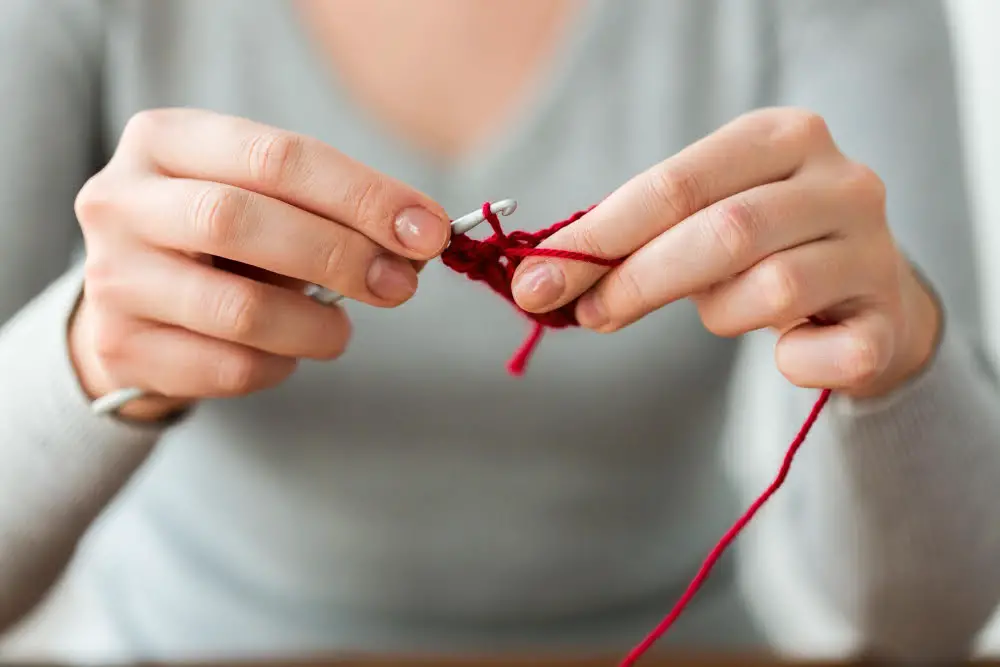
The size of your hook will determine how tight or loose your stitches are and can affect the overall look and feel of your finished piece. But with so many different sizes available, how do you know which one to use?
The first step in determining what size crochet hook to use is checking the pattern instructions. Most patterns will specify which size hook you should be using for that particular project.
If there are no specific instructions provided in the pattern, then consider factors such as yarn weight and desired stitch tension when selecting a needle.
Another way to determine what size crochet needle is best for your project is by making a gauge swatch before beginning work on larger pieces like blankets or garments. A gauge swatch allows you to test out different hooks until you find one that produces stitches at just the right tension.
Remember that every crocheter has their own unique style, so don’t be afraid to experiment with different sizes until you find one that works best for YOU!.
FAQ
Are there different types of crochet needles?
Answer: Yes, there are two main types of crochet needles: in-line (commonly known as Bates) and tapered (commonly known as Boye), with the tapered style being more popular outside North America.
How do you know what crochet needle to use?
To determine the appropriate crochet needle to use, refer to the yarn’s recommended hook size, which corresponds to its weight, such as 4mm for most DK yarns and 6-7mm for chunky yarns.
What factors should be considered when choosing the right type of crochet needle for a project?
When choosing the right type of crochet needle for a project, consider factors such as yarn weight, material, and project type.
How does the size of a crochet needle affect the final product?
“The size of a crochet needle affects the final product by determining the tightness and overall appearance of the stitches, with larger needles creating looser stitches and smaller needles creating tighter stitches.”
What materials are commonly used for making crochet needles and how do they influence the crocheting experience?
Answer: Common materials for crochet needles include aluminum, steel, plastic, and wooden, each influencing the crocheting experience in terms of weight, grip, flexibility, and warmth.
